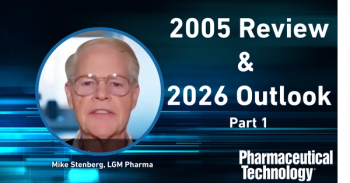
How Pharma Can Build Resilient Supply Chains Amid Trade and Tariff Shifts
Cross-functional trade compliance planning is critical as pharma braces for broad 232 tariffs and shifting United States-China-India supply dynamics.
*full transcript below
In Part 4 of our multi-part interview series, Jason Waite, an international trade expert at Alston & Bird, underscores the urgent need for pharmaceutical companies to build cross-functional trade compliance teams in response to rising global trade tensions—particularly potential Section 232 tariffs. Waite advises that compliance, especially around product origin, classification, and valuation, must be embedded early in R&D, manufacturing, and go-to-market strategies to avoid downstream disruptions. He emphasizes that proactive communication between departments—R&D, finance, logistics, tax, and trade—is a hallmark of companies that successfully navigate trade policy changes.
Waite also addresses uncertainty surrounding country-specific exemptions, noting that while 232 tariffs have historically applied universally, some countries—such as India—may be positioned for favorable treatment due to their role in supplying generics and acting as a potential bridge away from Chinese API dependence. He acknowledges that final tariff frameworks could evolve over time and recommends that companies immediately begin diversifying supply chains, particularly away from China, in anticipation of shifting United States trade priorities focused on domestic production and supply chain security.
Access Part 1 -
About the Interviewee
For over 25 years, Jason Waite has advised clients on all regulatory aspects of international trade and investment, including customs and trade agreements, export controls and sanctions, and related policy matters. Jason conducts internal investigations and compliance self-assessments, develops internal trade compliance and training programs, represents clients in audits and origin verifications, and guides clients through voluntary disclosures of actual and potential import and export violations. Jason has significant experience representing clients that are the subject of government investigations involving alleged violations of the export, import, and economic sanctions regulations. In transactional and strategic planning matters, Jason conducts international trade compliance due diligence, negotiates trade compliance responsibilities among parties to transactions, and develops supply chain optimization and global customs planning strategies. He regularly advocates before agencies in Washington for favorable advance rulings, advisory opinions, and commodity jurisdiction and classification determinations, and handles complex export licensing matters.
He is a frequent speaker at seminars and conferences on international trade topics and has been recognized in Chambers USA, Chambers Global, and The Best Lawyers in America®.
Transcript
*Editor’s Note: This transcript is a direct, unedited rendering of the original audio/video content. It may contain errors, informal language, or omissions as spoken in the original recording.
I'm not sure anybody has successfully navigated it yet, 'cause the waves are still coming over the side of the boat here on us. But I do think that a trade compliance management team that is cross-functional, where there are, effective communication channels between people in the R&D teams, the manufacturing teams, tax, finance, sales, logistics, these cross-functional teams usually overseen and coordinated by trade compliance professionals, this is a hallmark of successful trade management organizations that we've seen.
Of course, as I've said before, paying attention to these key issues like origin, classification and value, and doing it from the outset, like building it into the development process, building it into the go-to market process, making sure that somebody from the trade compliance function or wherever it's housed, you know, the function that's going to be responsible for managing compliance and duty burdens, building that into early stages of particular projects so that the impact of duty can be assessed from the outset of a particular development project and of a manufacturing plan or a go to market strategy.
These are all best practices that we've seen be effective, and I think that they'll continue to be.
Absent a country specific deal, 232 tariffs are expected to apply equally to all countries. That's how they've applied in the past for steel and aluminum and automotive, right? That's how these 232 cases have proceeded. They apply equally to all countries, so it seems, at first glance, unlikely that there will be different impacts for different geographies or different countries.
However, as I said before, there does seem to be a recognition by the administration that this market is more complicated, that building out domestic production and supply chains is a challenge. There are certain economic realities that that faces. So, as I said, I think it's possible that you might see some differentiation.
We just have to see how that comes about. And it's even possible that you might not see that when it's announced, but that it could be over time, it could evolve. The president can change. The president could announce a program on August 1st and it could be changed later. So India reportedly has not received a tariff letter, a general letter on the reciprocal tariffs.
They are reportedly one of the countries that's close to reaching an agreement with the United States or some type of a deal. And of course, everybody knows India is a major supplier of generic medicines to the US market. And I think it's also recognized that it does offer a bridge to transition supply chains away from China, right?
So some have asked and advocated for this administration to recognize this and try to carve out, you know, maybe accommodations there. There are good policy arguments like the ones I just hinted at to provide some leeway to India. And it's no secret that an objective of these tariffs is to reduce reliance on China for APIs and medicines.
There's also an overarching objective to spur more US domestic production. But maybe it needs to take a couple steps and maybe diversifying away from China is step one and rebuilding US production is step two. And so it's possible there could be some accommodation made for India.
I think everybody's kind of figured this out by now, but certainly we suggest that companies be diversifying their supply chains outside of China. Beyond that, I think we just have to wait and see whether any countries enjoy any kind of better treatment than others when it comes to these tariffs as they get announced sometime soon.
Newsletter
Get the essential updates shaping the future of pharma manufacturing and compliance—subscribe today to Pharmaceutical Technology and never miss a breakthrough.




